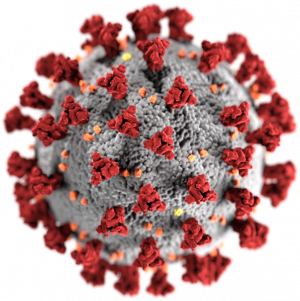Predictably, the global coronavirus pandemic has generated debates not only on how states are responding to it in Asia and beyond, but whether it should have been predicted in the first place. Part of that discussion centers on whether or not COVID-19 is truly a “black swan event” – shorthand for an unexpected, low-probability, high-impact event. When narrowly framed, however, the COVID-19 black swan debate can detract from the more fundamental structural issues at play in terms of risk analysis and what it does and does not tell us about crises such as the pandemic.
How to assign probability and manage risk, and the opportunities and challenges inherent in this process, is an industry of its own that transcends several fields, including finance and politics. But a focus in recent years has been on unexpected, high-magnitude events stemming from so-called fat-tailed statistical distributions, what Nassim Nicholas Taleb termed “black swan” events in his bestselling 2007 book. The term has since been at times subsequently misunderstood and misused. Taleb recently conveyed his frustration that people were wrongly calling COVID-19 a black swan event, since, in his view, it was far from unpredictable (unlike previous events such as the September 11 attacks).
Taleb is certainly right that a COVID-19-like event was far from unpredictable relative to developments such as the September 11 attacks. Taleb’s 2007 book had contained a reference to a potential virus outbreak. And he was not alone either: prominent individuals ranging from Bill Gates to Anthony Fauci had been issuing warnings about some development of this type for years.
But the broader issue, which Taleb has pointed to in the past as well, is that an excessive focus on the “black swan” terminology misses the bigger picture about the pandemic and risk analysis more generally. The point of Taleb’s book – and a proposition advanced by some other risk analysts as well – is that that fat-tail events are in fact more frequent and more predictable than often appreciated. A range of reasons, including structural dynamics in the international system and cognitive biases among decisionmakers, make these events seem less predictable than they perhaps should be.
That is not just an intellectual distinction. If there are systemic and cognitive issues skewing the way we manage risks and make predictions, as Taleb suggests, then the key issue is not how many predictions we can get right, but how we can make reforms to how we think and govern so that we are better prepared for future negative shocks, which are likely to be even more severe in a more networked world. Put more bluntly, it’s less about predicting the next black swan, but turning potential black swans into white swans. Indeed, Taleb has attempted to tackle this in a subsequent book as well, with proposals for building more resilient polities and societies including changing the way power is distributed and social compacts between governments and publics.
To be sure, the idea of rectifying systemic and cognitive issues is much easier said than done. At times, particularly in large bureaucracies, information may be available but putting together the pieces of the jigsaw puzzle can be challenging. For example, after a lengthy investigation, the 9/11 Commission Report famously concluded that though some intelligence had suggested a potential attack on the United States, the failure to precisely identify its nature and shape was due to a “failure of imagination.”
Other times, even when information is fully pieced together, different incentive structures or motivations can result in a course taken or not taken. Indeed, the key question with respect to COVID-19 is not so much why governments failed to predict it, but why some, including in Asia, were so slow to act even when information was fully available and when researchers and their own agencies had been warning of the new virus’ severe impacts. In some cases, the reality is that while experts and analysts repeatedly caution that we should overestimate the virus’ risk and should be wary of cascading effects and risks measured in various senses, politicians and other actors may have reasons to underestimate it for their own reasons.
Taleb’s treatment of “black swans” was intended as a broader examination of how we make assumptions about risk and how we can better prepare ourselves for earth-shattering developments, rather than to act as a prediction scoring guide. An event of the magnitude of COVID-19 should lead us to ask some of those broader questions rather than fixating on swan colors.

































